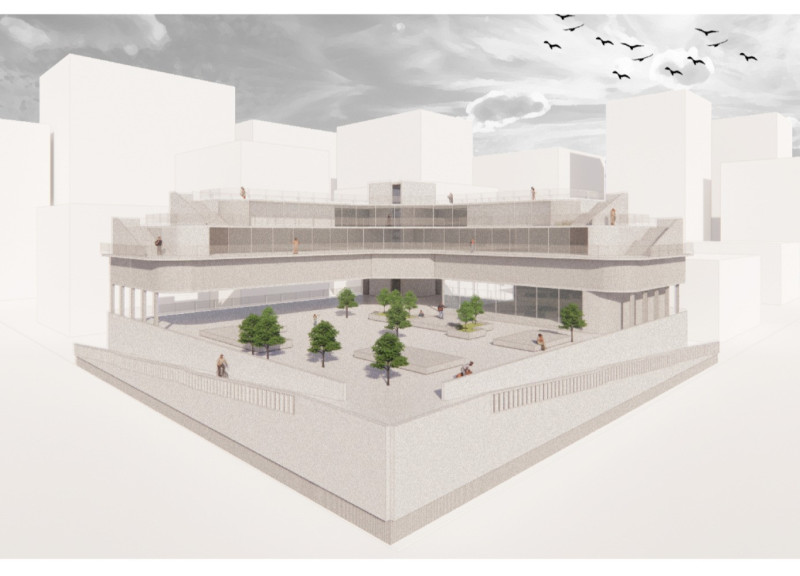5 key facts about this project
The architectural design titled "Make the House into a Park" aims to address Vancouver's persistent housing crisis by rethinking residential living. Located in a dense urban area marked by rising demand and limited land, the design emphasizes a blend of public and private spaces. The concept focuses on creating a sustainable environment that encourages social interaction among residents while providing personal living areas.
Conceptual Framework
The design is built around the idea of clearly defining public and private spaces. The first floor serves as an open area reminiscent of a park, promoting community engagement. In contrast, the upper floors offer living spaces that prioritize privacy. This structure aids in creating a balance between social activities and personal time, enhancing the quality of life for residents.
Spatial Organization
The overall layout consists of multiple levels. The first floor is dedicated to parking, while the second floor includes open areas designed for social interactions. The third, fourth, and fifth floors are reserved for residential units. This vertical organization allows for a dense community setting, where accessibility is reinforced by internal and external stairways that connect residents across different levels.
Living Units and Flexibility
Living units are designed to be adaptable, each with a base size of 4x6x3 meters. This configuration accommodates various household sizes, including single, double, and triple-person options. By providing flexible furniture arrangements, residents can personalize their living space according to their needs and preferences.
Green Integration
The project incorporates green walls between living spaces on the upper floors, adding a natural touch to the environment. These green elements serve as both separators and visual enhancements, offering privacy and improving air quality. Furthermore, the central park, with access via ramps and stairs from the parking area, acts as a communal gathering point. It encourages interaction among residents and strengthens the connection between urban life and nature.
The careful balance between community living and individual privacy demonstrates a thoughtful response to the challenges of urban housing.



















































